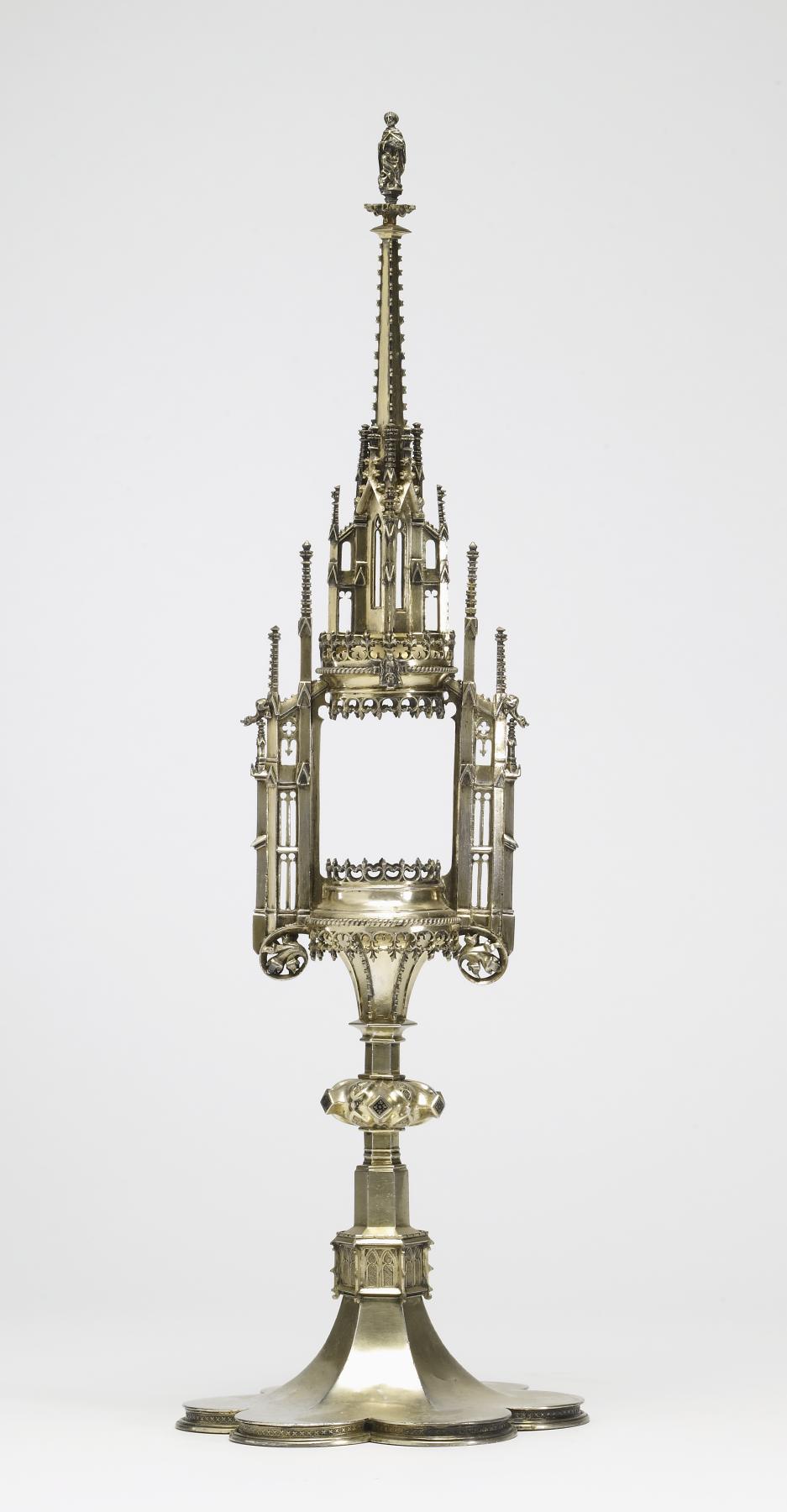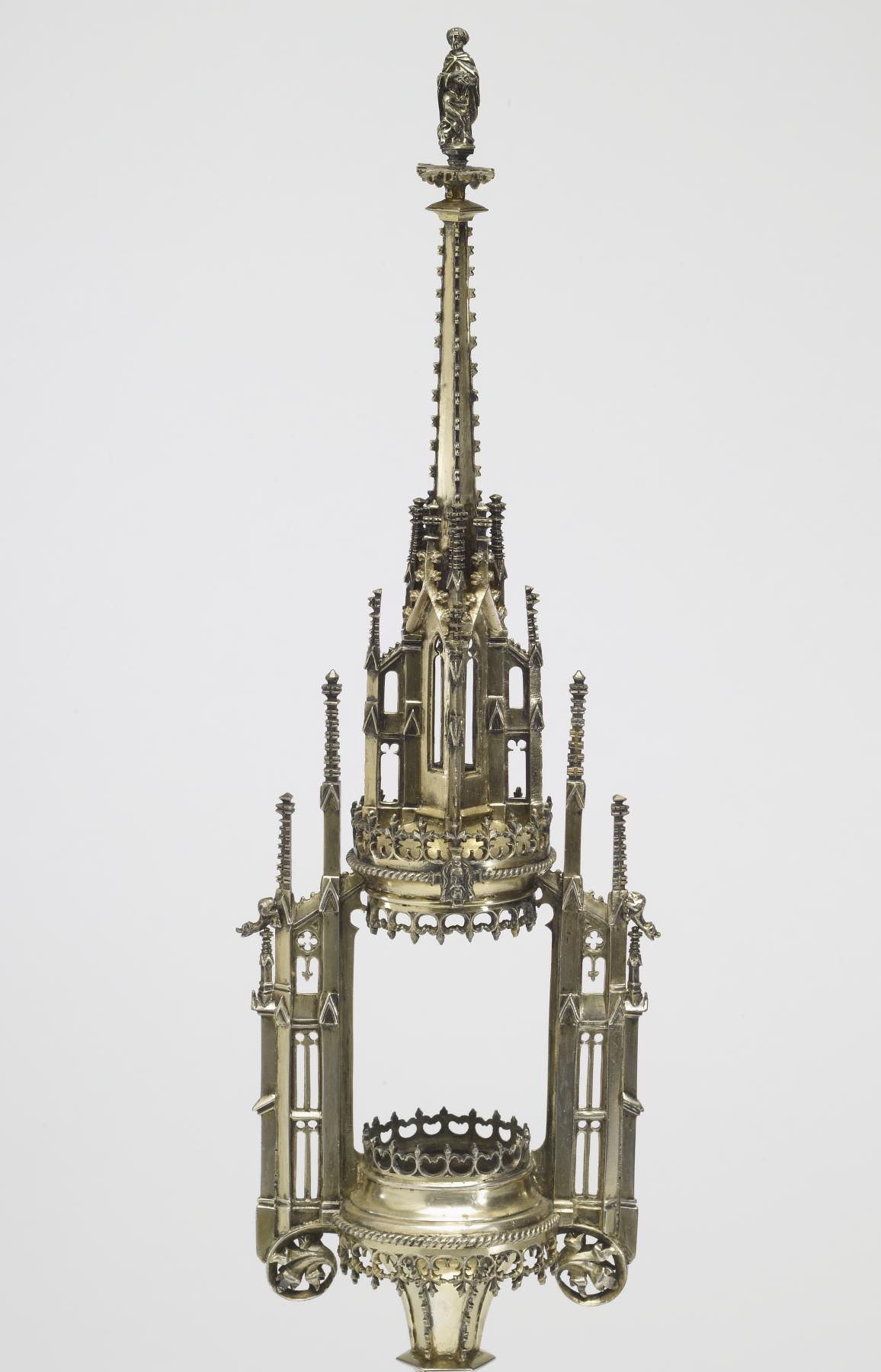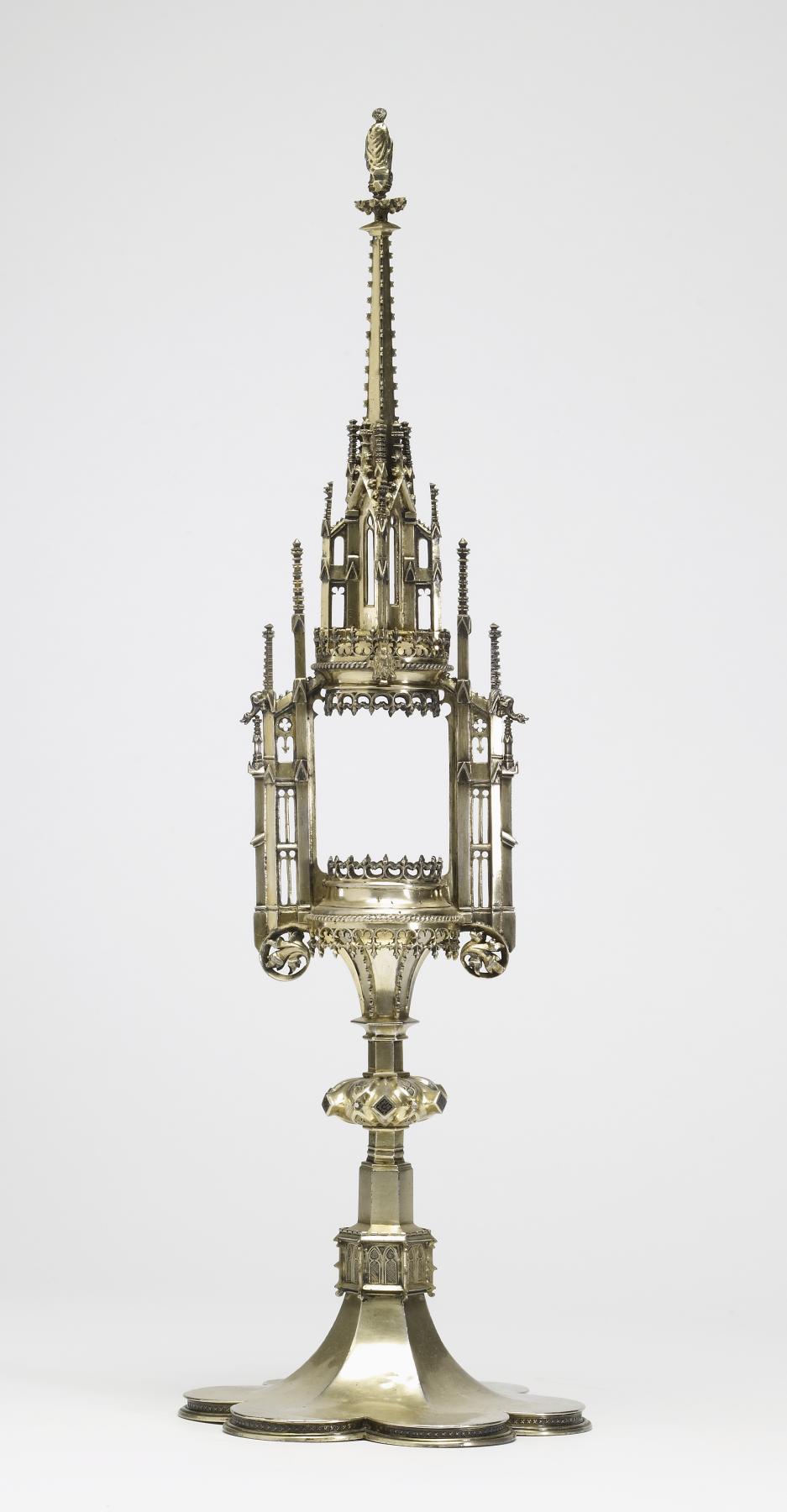Reliquary
(Medieval Europe )
This reliquary resembles a miniature Gothic church, complete with gargoyles. It is crowned by a figure of the Evangelist Luke, with his attribute, or symbol, the ox. A relic or small piece of a saint's body would have been contained in a rock crystal cylinder (now missing).
Relics were collected during the Middle Ages. They were often the most prized possessions of kings and noblemen and the beginning of many family collections. They continued to be collected in the 1600s.
Provenance
Provenance (from the French provenir, 'to come from/forth') is the chronology of the ownership, custody, or location of a historical object. Learn more about provenance at the Walters.
Hollingworth Magniac, Colworth, Bedfordshire, before 1862, by purchase; Charles Magniac, Colworth, 1867, by inheritance; Sale, Christies, London, July 2, 1892, no. 790; Charles Borradaile, Brighton, by purchase; George Robinson Harding, London, by purchase; Henry Walters, Baltimore, 1912, by purchase; Walters Art Museum, 1931, by bequest.
Exhibitions
| 2006-2007 | For This is My Body: The Medieval Missal. The Walters Art Museum, Baltimore. |
| 1962 | The International Style: The Arts in Europe Around 1400. The Walters Art Gallery, Baltimore. |
Conservation
| Date | Description | Narrative |
|---|---|---|
| 10/17/1962 | Treatment | cleaned |
Geographies
Germany, Swabia
(Place of Origin)
Austria (Place of Origin)
Measurements
H: 16 1/4 × W: 5 1/8 × D: 4 15/16 in. (41.2 × 13 × 12.5 cm)
Credit Line
Acquired by Henry Walters, 1912
Location in Museum
Accession Number
In libraries, galleries, museums, and archives, an accession number is a unique identifier assigned to each object in the collection.
In libraries, galleries, museums, and archives, an accession number is a unique identifier assigned to each object in the collection.
57.691








